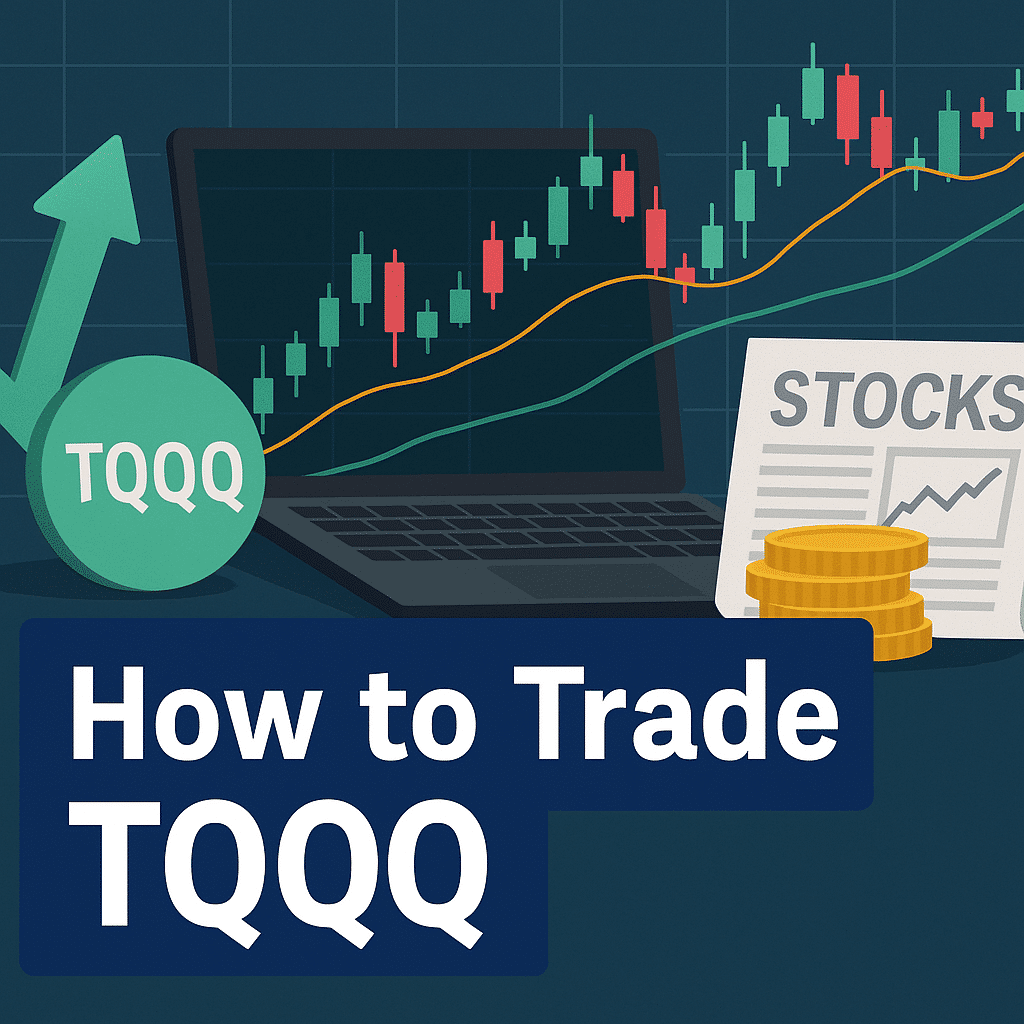How to Trade TQQQ: Strategy Guide for 2025

TQQQ (ProShares UltraPro QQQ) is a 3x leveraged ETF that seeks to deliver three times the daily performance of the Nasdaq-100 Index (NDX). It’s a favorite among aggressive traders looking to magnify their returns—but it comes with amplified risks.
In this blog, you’ll learn how to trade TQQQ effectively, with risk management, chart setups, and timing strategies.
What Is TQQQ?
TQQQ is an ETF that:
- Tracks the Nasdaq-100 Index (same as QQQ)
- Uses leverage to deliver 3x daily return
- Is not suitable for long-term holding due to compounding decay
Ticker: TQQQ
Issuer: ProShares
Leverage: 3x Long Nasdaq-100
Best for: Short- to medium-term trades
Who Should Trade TQQQ?
- Day traders: looking for big intraday moves
- Swing traders: targeting short-term market trends
- Volatility traders: using TQQQ for short bursts of momentum
TQQQ is not ideal for long-term investors due to time decay and rebalancing effects.
How to Trade TQQQ (Step-by-Step)
1. Analyze the Nasdaq-100 Index (QQQ)
Since TQQQ mirrors QQQ x3, always analyze:
- QQQ trends
- Nasdaq futures
- Tech sector sentiment (XLK, MSFT, AAPL, NVDA news)
2. Use Technical Indicators
Because of its volatility, TQQQ responds well to technical analysis:
Popular indicators:
- 9 EMA & 21 EMA crossover
- RSI between 50–70 during bull runs
- MACD bullish crossover
- Breakout above previous day high
3. Pick the Right Timeframe
- Intraday (1-min to 15-min) for day trading
- 1-hour to daily for swing trades
- Avoid holding over weekends due to gap risk
TQQQ performs best in trending bull markets, not sideways or bear phases.
4. Trade with Proper Risk Management
TQQQ can move 5–10% in a single day. Use:
- Stop-loss orders (2–3% below entry)
- Position sizing (small allocations due to leverage)
- Take-profit zones (5–10% targets)
5. Avoid Holding During Bear Markets
TQQQ’s compounding drag makes it unsuitable in volatile or down-trending markets. Consider inverse ETF SQQQ if you expect downside.
TQQQ Trading Strategies
A. Trend Following Strategy
- Buy when QQQ is above 50 EMA
- Enter TQQQ on EMA crossover or flag breakout
- Ride momentum with trailing stop-loss
B. Gap Fill Strategy
- TQQQ often gaps up/down
- Enter when price fills the gap and bounces or rejects
- Use volume confirmation
C. Volatility Breakout
- Trade high-volume breakouts after consolidation
- Confirm with MACD and Bollinger Bands
TQQQ vs QQQ
| Feature | QQQ | TQQQ |
|---|---|---|
| Leverage | 1x | 3x |
| Risk | Lower | High |
| Suitable For | Investors | Traders |
| Holding Time | Long-term | Short-term only |
Final Thoughts
TQQQ offers exciting profit potential, but it’s not a beginner’s ETF. Trade it like a pro—track the Nasdaq, follow price action, manage your risk, and avoid holding it during volatile downturns.
TQQQ rewards the prepared. Use it wisely.
FAQs
Q1. Can I hold TQQQ long term?
A: It’s not recommended due to volatility decay. It’s best for short-term trades only.
Q2. What’s the best time to trade TQQQ?
A: During trending bull markets or on high-volume breakouts.
Q3. Is TQQQ good for beginners?
A: No. It’s highly volatile and best for experienced traders who understand leverage.
Q4. Can I use options on TQQQ?
A: Yes, but they’re extremely volatile. Use only with a solid options strategy.
Q5. How much capital do I need to trade TQQQ?
A: You can start with $500–$1,000 but ensure tight risk control due to the 3x leverage.